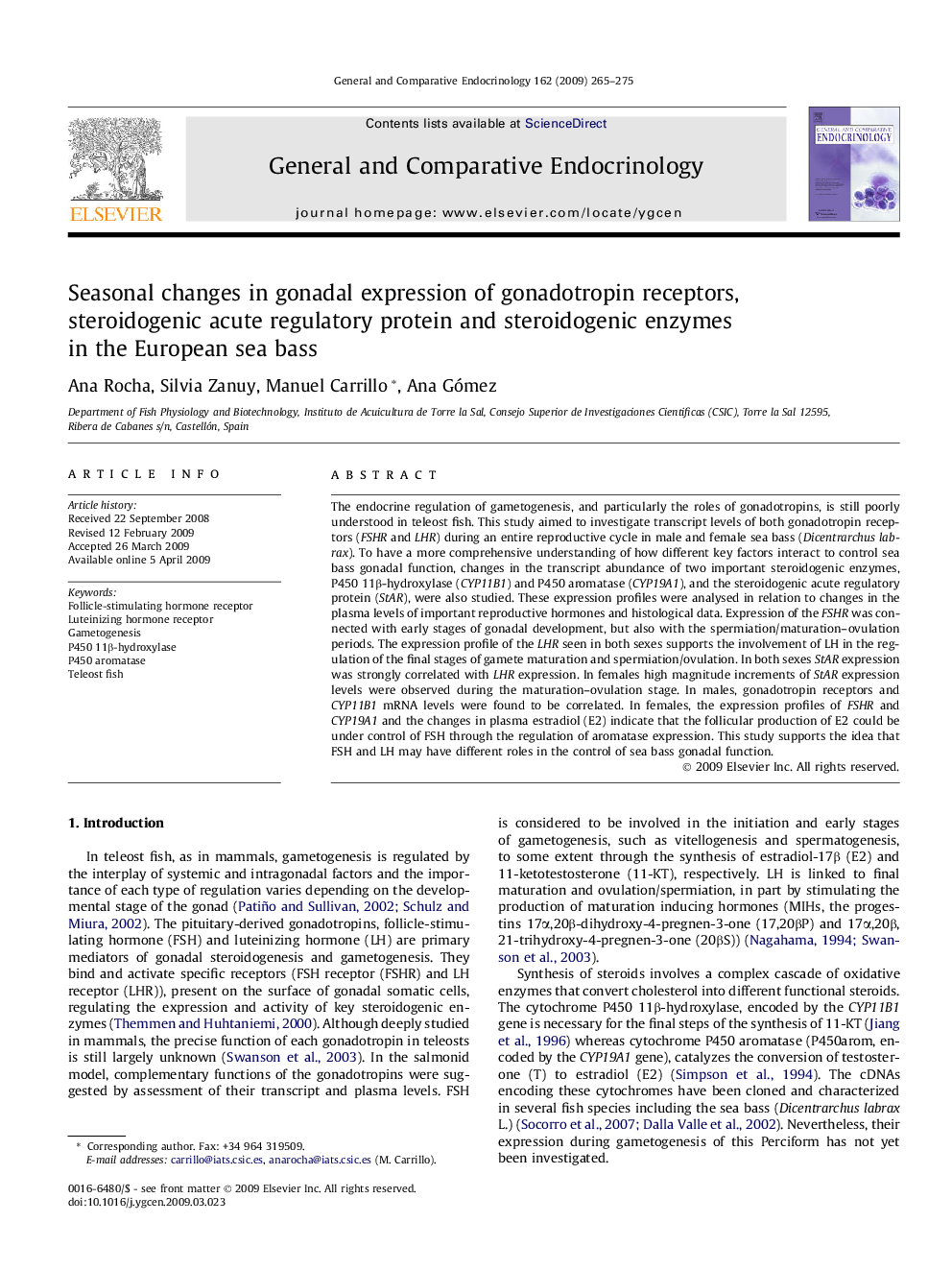| Article ID | Journal | Published Year | Pages | File Type |
|---|---|---|---|---|
| 2801471 | General and Comparative Endocrinology | 2009 | 11 Pages |
The endocrine regulation of gametogenesis, and particularly the roles of gonadotropins, is still poorly understood in teleost fish. This study aimed to investigate transcript levels of both gonadotropin receptors (FSHR and LHR) during an entire reproductive cycle in male and female sea bass (Dicentrarchus labrax). To have a more comprehensive understanding of how different key factors interact to control sea bass gonadal function, changes in the transcript abundance of two important steroidogenic enzymes, P450 11β-hydroxylase (CYP11B1) and P450 aromatase (CYP19A1), and the steroidogenic acute regulatory protein (StAR), were also studied. These expression profiles were analysed in relation to changes in the plasma levels of important reproductive hormones and histological data. Expression of the FSHR was connected with early stages of gonadal development, but also with the spermiation/maturation–ovulation periods. The expression profile of the LHR seen in both sexes supports the involvement of LH in the regulation of the final stages of gamete maturation and spermiation/ovulation. In both sexes StAR expression was strongly correlated with LHR expression. In females high magnitude increments of StAR expression levels were observed during the maturation–ovulation stage. In males, gonadotropin receptors and CYP11B1 mRNA levels were found to be correlated. In females, the expression profiles of FSHR and CYP19A1 and the changes in plasma estradiol (E2) indicate that the follicular production of E2 could be under control of FSH through the regulation of aromatase expression. This study supports the idea that FSH and LH may have different roles in the control of sea bass gonadal function.
